How Digitization Forever Changed Musical Consumption and Musical Identity
Music is a human constant, a crucial element of who we are and what makes us unique. This perspective is illustrated beautifully by the author and musician, Clemency Burton Hill, “We are a music-making species — always have been, always will be — and music’s capacity to explore, express and address what it is to be human remains one of our greatest gifts…It is an impulse that is still fundamental to who we are.”
Though our appreciation for music may be intrinsic to who we are, this relationship isn’t direct and absolute. Like so much in our lives, it’s place in our lives is mediated through technology. The means of musical consumption doesn’t merely change how music is accessed; it changes our very idea of music.
Since the late 90s, music has gone from a scarce physical good to a democratized digital commodity. To understand how this conceptual shift has occurred, we need to understand just how dramatically musical access has changed in the past few decades. This shift, while broad and complex, has a singular starting place: Napster.
A Brief History Of Digital Music
In 1999, Napster changed the musical landscape forever. The file-sharing program made it seamless and easy to download and transfer individual songs and MP3s from the internet, revolutionizing the music industry. Pre-Napster, it would cost you $15 for an entire album, which would contain at most four or five tracks you wanted. With Napster, you could have any songs you want for free, and forever. All you had to do was patiently wait for them to download.
Napster existed for a few legally embattled years before it was replaced by similar pirating services like Limewire, Kazaa, and Morpheus. The early days of this new, “music sharing” was one big game of regulatory whack-a-mole - once one site was shut down, three more appeared in its place.
The renegade MP3 economy was legitimized - and ultimately usurped - by tech behemoth Apple when it launched iTunes and the iPod in 2001, after reaching a legal deal with the five biggest music companies—BMG, EMI Group, Sony, Universal Music Group, and Warner Brothers Records. By making music downloading legal and above water, Apple brought digital music out of the dark and into the mainstream.
How Digital Music Changed How We Relate To Music
There’s a lot to say about the ascent of digital music, and how it upended the fundamental economics of the music industry. More profound, however, was its impact on the concept of music itself. These changes fundamentally, and irrevocably altered our entire conceptualization of music.
One of the biggest shifts was with the primary unit of music. Before MP3s, consumers would buy an entire album, costing them $15-20, thus signifying a non-trivial decision. The choice to buy one album over another involved a bigger commitment and was therefore more indicative of their musical taste, deeper genre preferences, and even one’s personal identity. In this way, owning an album was like owning an article of clothing - it said something about you. And over time, one’s album collection was akin to their wardrobe: a reflection of your identity. Committing to an album purchase was an exercise in personal style.
The digitization of music changed all of that, and it did so in two ways. For one, the unit of music quickly became the song, not the album. One need not buy an entire album to get access to the small sliver of its tracks that you wanted. This trend, pioneered by Napster and its ilk, was emblazoned by iTunes. As Chan Kim & Renee Mauborgne describe in Blue Ocean Strategy, this was a key innovation. “By allowing people to buy individual songs and strategically pricing them far more reasonably, iTunes broke a key customer annoyance factor: the need to purchase an entire CD when they wanted only one or two songs on it.”
This may sound like a small change, but the downstream effects of this on musical culture were immense. Albums served as a bastion of musical taste - the stickiness between a consumer’s musical leanings and the genres they listened to. The business world rightly recognized this as an inefficiency, now solved, but it was much more than that: it was the glue between musical identity and musical consumption.
As Chuck Klosterman chronicles in The Nineties, chronicling the cultural history of this era, this shift away from buying physical albums was immense. “Its influence on the meaning of music was extraordinary and unanticipated. It made single songs more important than albums, which hadn’t been the case since the early sixties. It eroded the cultural significance of genres and annihilated nonvirtual musical subcultures.” (p. 151)
This evolution, however, wasn’t necessarily a bad thing. With the erosion of the significance of genres, and the pressure to buy according to one’s existing musical identity, consumers were now more free to explore a fuller spectrum of music. As Klosterman goes on to describe, “It radically expanded the horizons of pop consumption, exposing people to music they would have never purchased or investigated.”
The Impact Of Musical Democratization
As digital music proliferated, musical identity and musical consumption became decoupled. This shift was galvanized by the other, bigger shift that unfolded. For the majority of consumers, music became either extremely cheap (iTunes) or completely free (pirating). Before this change, music was a product that was finite and limited. If you wanted to listen to a certain song, but you didn’t have the physical album, you had to wait around the radio in the hopes that it might come on. But when digital music changed all of it. It democratized music and made it abundant.
One might be tempted to argue, through a simple invocation of classic economics, that this commodified music and made it less valuable. Digital music, in effect, flooded the market. This, however, doesn’t seem to be the case. People don’t value the experience of listening to music any less, but they do feel less attached to it. It became more abstract and diaphanous. Music - like much of modern media, is no longer a finite, transient good, but is instead viewed as an omnipresent force that can be conjured up anytime and anywhere, so long as we have access to the internet.
The ever-presence of musical access made these distinctions between genres and musical communities almost completely obsolete. As Klosterman summarizes, “Limitations and scarcity made subjective distinctions meaningful. Napster made subjective distinctions unnecessary. A person could now have the complete catalog of all those artists, at almost no cost, without leaving the house. There were no limitations, and there was no scarcity. ” (p. 156)
The digitization of music didn’t just change how music is consumed. It forever changed how people think of music.
From Digital Music to Musical Streaming
The early 2000s was a dramatic shift for the music industry. It ushered in the “era of the song”, and fundamentally altered how music is consumed and conceptualized. Napster broke the musical field wide open, and mainstream players such as iTunes, which legitimized this “file sharing” would come to dominate musical consumption for a good part of the next decade.
This, however, was just the beginning. Musical consumption would soon shift again, moving from cheap tracks for purchase, to streaming music for free via monthly subscription. This may seem like a small distinction, but this brought in an entirely new set of incentives and economic structures that didn’t just change how music is accessed, but the entire face of musical creation itself. Stay tuned for Part 2
Photo by Elice Moore via UnSplash
Part II explores how the specific incentive structures of Spotify’s royalty system alter musical composition, and the face of music culture. Be the first to be notified, by signing up here (for free)
About the author
Matt Johnson, PhD is a researcher, writer, and consumer neuroscientist focusing on the application of psychology to branding. He is the author of the best-selling consumer psychology book Blindsight, and Branding That Means Business (Economist Books, Fall 2022). Contact Matt for speaking engagements, opportunities to collaborate, or just to say hello
References for Digital Music and Consumer Behavior
Klosterman, C (2021). The Nineties (p. 151). Penguin Publishing Group. Kindle Edition.
Kim and Renée (2024) Itunes: Business Case, Blue Ocean Strategy.com
Shinde, J. (2017) 11 Popular Online Piracy Tools From The Turn Of The Century: Do You Remember Using Any Of Them?, IndiaTimes


